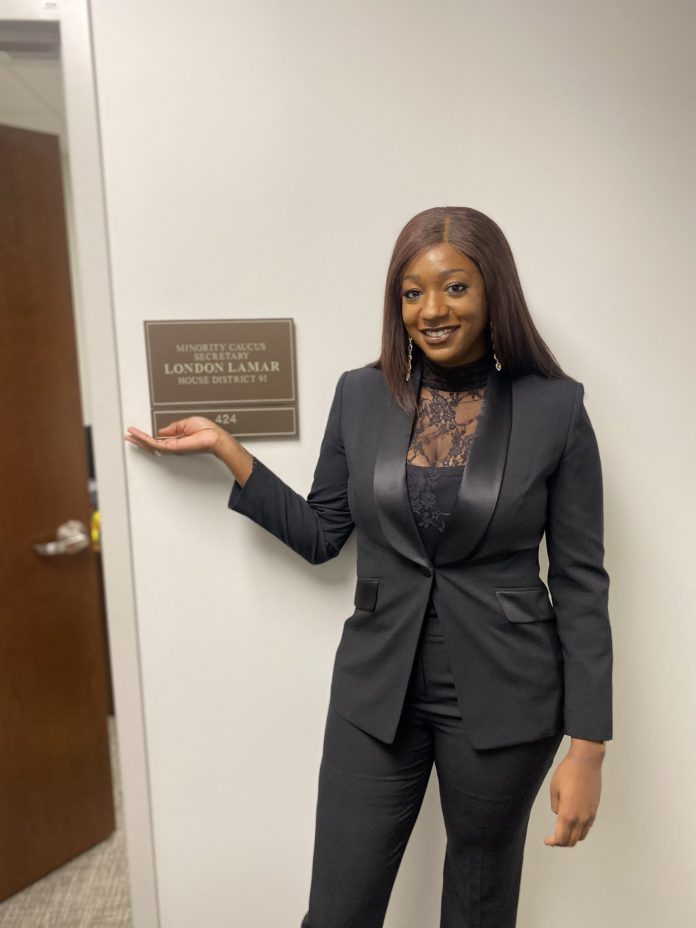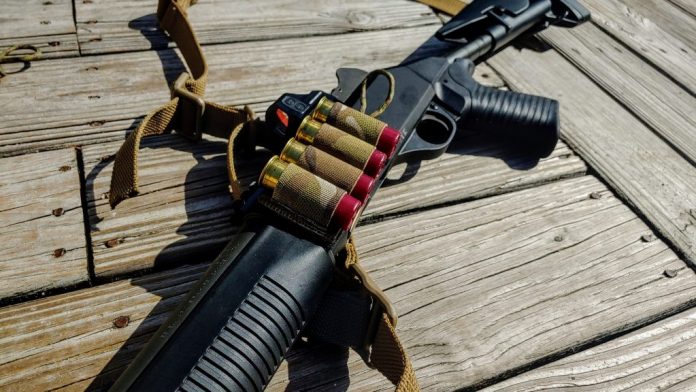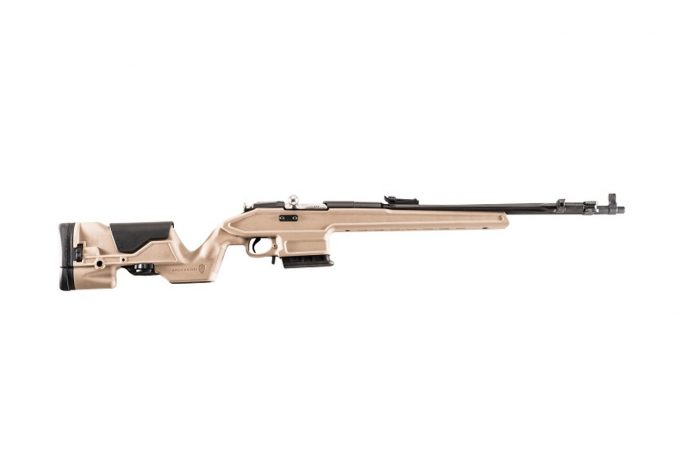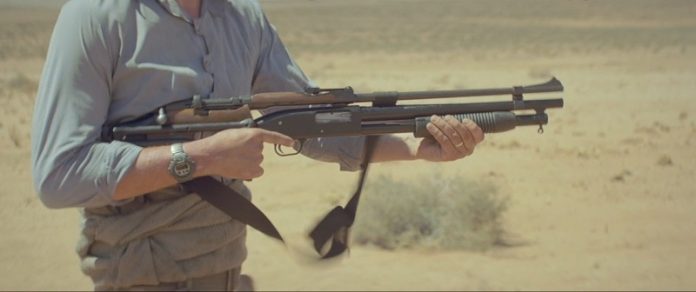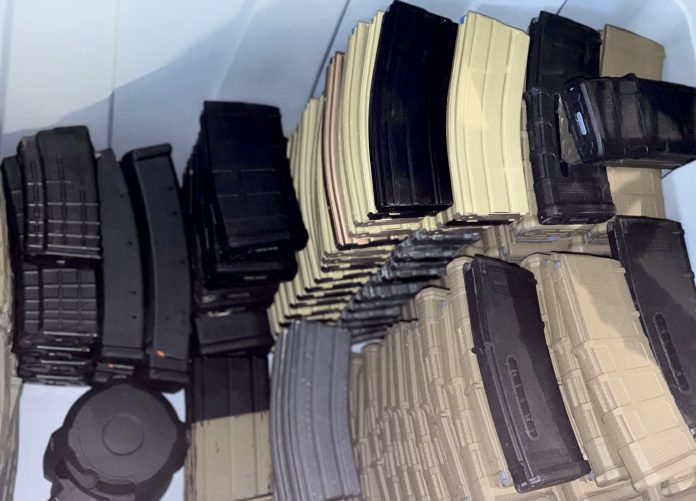Democrat Sen. London Lamar, pictured above, announced in late November that she was introducing a bill to reinstate handgun licensing requirements in Tennessee, but oddly, only for two particular counties. Describing these enumerated counties as “…hav(ing) demonstrated that they are not ready to handle the wide free range of guns, with so many of the crime challenges and the violent crime we have had in our cities…”, she proposes that eliminating permitless carry will have a positive impact on violent crime.
Firstly, lets dispense with the obvious issue with Sen. Lamar’s proposal: Permitless carry doesn’t facilitate violent crime. People who are willing to commit homicide were never dissuaded from doing so by a gun permitting scheme. If the prospect of a felony murder charge wasn’t enough to dissuade someone from their chosen task, something tells us that an additional lesser charge for carrying unlawfully wasn’t going to tip the scales. The sooner we dispense with this fantasy that laws (and by extension law enforcement) are proactive, rather than reactive, the sooner we can address issues from the reality in which we live.
Secondly, has it occurred to no one else that Davidson and Shelby counties are home not only to Memphis and Nashville, but the majority of the People Of Color in the state? Gun control’s history is liberally leavened with paternalist racism, but it’s rarely spelled out so clearly. Sen. Lamar likely has the best of intentions, but could do with some introspection before blatantly declaring that the black people of her home state aren’t responsibly enough to be capable of legal firearm ownership. There are plenty of ways to address violent crime in urban areas without a blanket statement in the form of legislation declaring their incapacity for living within the law, and they start with investing in the communities most affected by violence, and reducing the causative factors. Guns are the symptom end of the problem, and treating symptoms may make you feel better, but it fails to address the disease.
Sen. Lamar: Memphis Not Ready
Rethinking Shotgun Side Saddles
Side saddles have always been those must-have add-ons for shotguns. You need a shotgun, a white light, a sling, and a side saddle, and that’s it. Why the side saddle? Well, because shotguns are relatively low-capacity weapons. Who doesn’t want a little spare ammo on their gun? With that in mind, let’s talk about how side saddles have changed.
The traditional side saddle is a polymer design that mounts to your gun via a set of receiver bolts. Often the same bolts that hold your gun together keep the side saddle pinned onto your gun. That’s how it used to be, but it’s changing for the better.
The Age of The Bolt-On Side Saddle Is Over
Bolt-on-side saddles are no longer the only option. I’d argue they are on the way out, to be completely fair. These bolt-on ammo caddies have their issues. Using the bolts that go through the receiver of your gun creates all sorts of problems that are often the inverse of each other.
First, if you tighten the bolts too much, you can cause reliability issues, especially in semi-autos. It’s less common in pump guns but still possible. The side saddle pulls too tight on the gun and creates binding and reliability issues.

On the flip side, if the side saddle is too loose, it wants to fall off and move around as you attempt to retrieve shells. Should the thing actually depart from your gun, the bolt that holds in your trigger group is now unsecured.
This means you have to get it just right and apply Loc-Tite. That’s not necessarily asking a lot, but why not avoid the issue altogether if possible? Modern side saddles have eliminated these problems and just streamlined everything.
The New Side Saddle
Side saddles in 2022 are not a polymer but made from textiles and fall into that soft goods category. Your modern side saddle is likely made with a hard backing and soft elastic loops to hold your shells. Esstac produced some of the first high-quality elastic side saddles.
Vang Comp now produces its own soft goods side saddle that has taken the crown as what’s often considered the best option.
Ares gear makes several options, including some two-shot options, and they teamed up with Raven Concealment to create the ModulLoader option. These are attached to your shotgun via elastic and are easy to detach and even reload if you have multiple cards.
It’s important to remember that most side saddles are disposable items. Even the polymer models will wear out and lose their grip eventually. The elastic cards do the same but are easier and cheaper to replace. These side saddles are lighter and won’t reduce reliability either. Plus, the user has more control over where they sit on the receiver.
The Other Option
If you want an option that isn’t a wear or consumable item, you have to turn to Aridus Industries and the Q-DC. The Quick Detach Carrier is an over-engineered metal side saddle that has a lot of the benefits of the elastic cards.
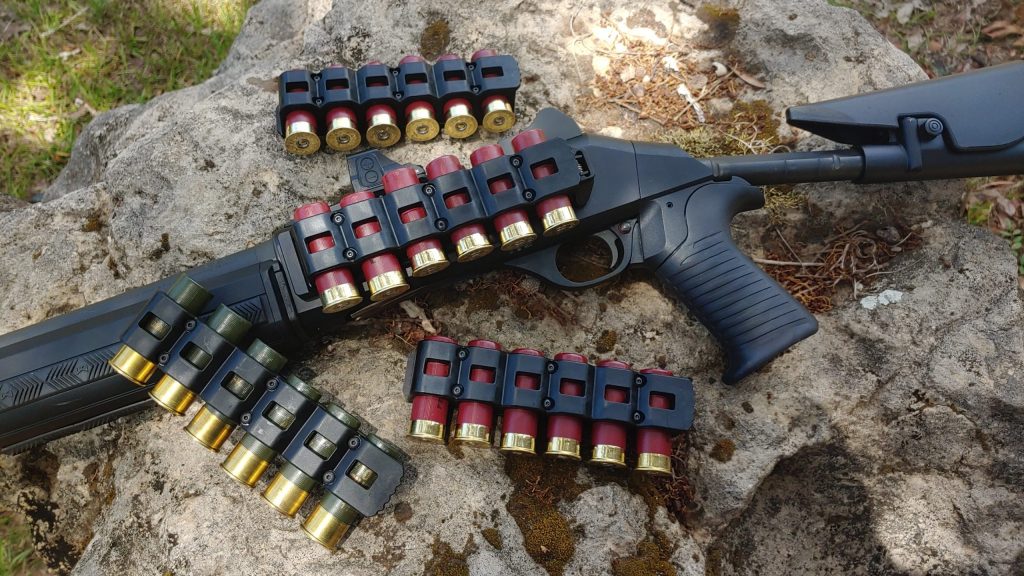
It is a two-piece system with a detachable set of rings for ‘reloading’ the side saddle. Aridus produces a universal model, as well as a bolt-on model for the 870 and Mossberg 500 series. The universal option is the superior choice and uses a very sticky back that allows it to attach to whatever shotgun you have on hand.
This setup is quite expensive, but it is the sports car of side saddles.
Do You Even Need One?
Do you need a side saddle on your shotgun? To be honest, probably not. It’s a shotgun, and in the typical home defense encounter, you aren’t likely to empty the weapon or need to reload. Even so, if you want one, get one. It’s small, affordable, and easy to toss onto your shotgun. It won’t be a detriment to your firearm by any means.
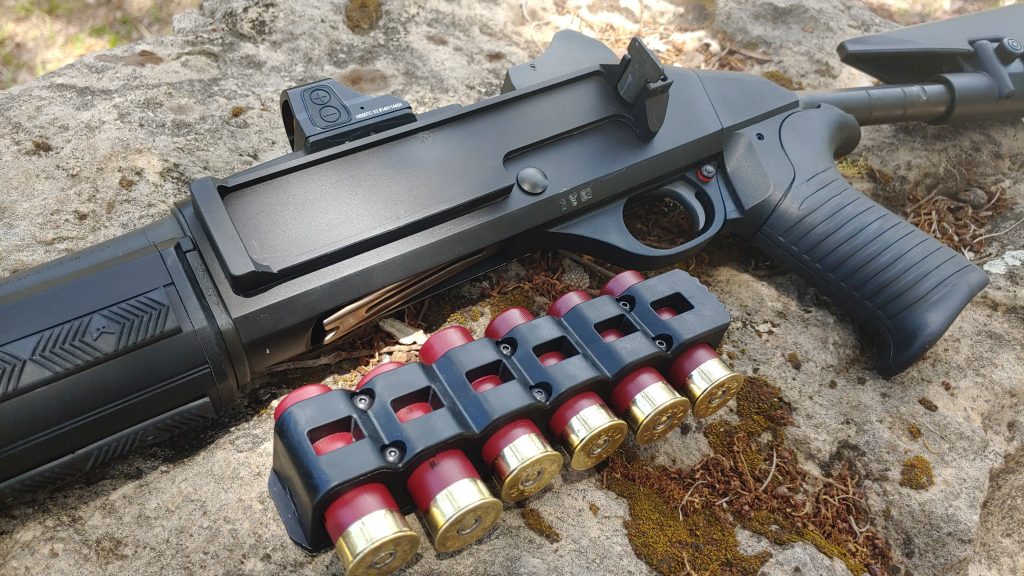
Shotguns shouldn’t be left in the 1990s, and their recent uptick in popularity has given us some truly awesome updates to the old thunder stick.
A Blast From The Past
Back when I worked at the gun shop in ‘09 I drafted a post on social media that I hoped would serve as a primer that I could direct people to when they had questions about what gun to buy.
Looking at it 13 years later it’s aged pretty well, especially compared to some of my other opinions about guns and self preservation.
I wanted to share it in its entirety, with the relevant updates and adjustments.
Let me know what you think:
“Because I have received so many questions about this topic over the past year, I figured it was time to put down some guidelines. Between having been a firearms enthusiast (ok, fine, gun nut) since about 13 years old, and having worked in one of the country’s largest gun stores for the past year, I figured this gives me at least a limited amount of experience that can be shared with those I hold dear.
THE GUN BUYING CRITERA:
(1) SIMPLICITY: You want all operations of the weapon to be simple. The reason for this is that, when under stress, you will lose a lot of your fine motor skill (I’ve since learned this is not an accurate statement. For more on this seek out John Hearne’s lecture on Who Wins, Who Loses, and Why) and will not be thinking as clearly as you normally would. I have heard tell that someone experiencing an adrenaline rush is as impaired as someone who is drunk. The easier the weapon is to manipulate and operate, the less you will have to think about during that “oh shit” scenario.
NOTE: This is my main reason for disliking manual safety catches on a defensive pistol. There have been numerous instances of professionals (cops, soldiers, contractors, etc) who have drawn their side arm and attempted to fire it, only to find that they had either a) neglected to remove the safety or b) accidentally re-activated it in the process of drawing the weapon. (I don’t have any sources to substantiate this) Remember this phrase kids: SAFETIES DONT MAKE YOU SAFER. (Still true. One of my biggest issues with manual/active safeties is that it creates an artificial external locus of control in novice users. I abhor the people that insist they need a safety on a handgun “because they have kids”)
(2) RELIABILTY: I figure this one is pretty self-explanatory. The sexiest looking or most comfortable firearm on the planet ain’t gonna do you any good if it’s constantly jamming on you or won’t consistently load rounds in the first place. Some would argue that this should be the most important criterion. I disagree for this reason: If the weapon is simple, it will be easy to correct a malfunction. ANY weapon, even the most reliable will jam or misfire eventually. So if it is a more complicated system, correcting that malfunction will take more time than you may have.
(3) EASE OF MAINTENANCE: People are naturally lazy. All weapons need to be maintained. You can see this Catch 22. The easier the firearm is to maintain, and the LESS routine maintenance it requires, the better it will perform for you in the long run. Routine maintenance usually entails field stripping the weapon, removing any carbon build up and lubricating the functional parts. Sounds easy, but some folks can’t spare the 30 minutes out of their day to do it (Guns run dirty, they don’t run dry. Routine maintenance is more about replacing springs, inspecting feed lips, and making sure screws haven’t backed out/vibrated loose)
(4) PARTS AVAILABILITY AND COST: Firearms are just like any other machine. Eventually parts are going to wear out and need to be replaced. The less expensive and more readily available these parts are, the more likely it is that your weapon will be in peak operating condition. More so, if the parts are easily replaced you won’t be scared to wear them out. I know that sounds strange, but follow me here. If you train routinely with a weapon, the parts will wear faster than if it only comes out once every couple of months just to go punch paper.
NOTE: There is a huge difference between learning how to shoot a gun and learning how to fight with a gun. The level of training that it takes to become effective with a firearm for personal defense is much more involved than just going to the range once a month and shooting at a bull’s-eye. True weapons training wears out factory parts much quicker than casual sport shooting. (Kinda true, kinda not. The mechanics of shooting don’t really change between bullseye and gunfighting, and the other aspects don’t really involve live fire, so they don’t really contribute to wear on the gun. I still maintain that it’s much more involved to become a well rounded defensive practitioner, but not because the mechanics of “gunfighting” are any more strenuous on the gun than competition. Plus the high volume of ammo that serious competitors go through also disproves the original statement)
(5) AMMUNITION PREFERENCE: Firearms have a personality. Not only that, but each INDIVIDUAL firearm has its own personality. For example, you can pick up one make and model pistol, and it will have a certain predilection for a particular type of ammo. You can then pull the exact SAME make and model pistol from a different production run and find that that same ammo may cause the weapon to jam routinely. While this is a bit of an exaggeration, the point is that some weapons are more particular about the kind of ammunition you feed it than others. (Yes “feed it”. It’s an industry term). The less of a “picky eater” your firearm is, the easier it will be for you to find ammo that works and you won’t be as hesitant to shoot your stockpile of that one special brand your weapon actually likes.
If you notice, nowhere in these criteria was COMFORT ever mentioned. I am currently a student of the school of “just shoot the fuckin’ thing!” The philosophy being that, if you are truly committed to becoming an effective defensive shooter, you will put enough time behind the trigger to master whatever platform is available. ALSO these people who say that they can shoot one type of handgun but not another are FULL OF SHIT! That’s like saying “When I get behind the wheel of a Ford I’m a great driver, but in a Chevy I’m all over the road”. You can either shoot or you can’t. The skills of a true marksman transcend any differences between models of firearms. (I was way off base with this one…mostly. There is a huge difference between a pistol being “comfortable” and being “ergonomic”. You need to be able to reach all the controls, and be able to build the appropriate structural support around the grip of the gun. Some guns fit certain people better than others. Additionally, as your skill develops you also develop preferences. I, for example, seem to shoot better with a rolling trigger instead of one that breaks from a hard wall. People are wired differently, they think and process information differently, and they interpret stimuli differently. As such, it makes sense to try and tailor the tool to the user as long as you’re not just trying to buy skill)
Now, all this being said, most of my inexperienced friends are sitting here, having read this saying “Well that’s great. All this is good information, if you already know the characteristics of the guns”. Which is true? I’m not going to end this by saying that everyone needs to go out and only buy one gun that I recommend, and if they don’t then we are no longer friends. The truth is that having me select a gun for you is a lot like having me pick out your underwear. It’s just too personal of a decision for anyone to make but you. I will, however, offer some friendly suggestions. Mind you, all of these recommendations are going to be for handguns that CAN be used for home defense, but is primarily geared towards concealed carry:
GUNS WORTH LOOKING IN TO:
-Glock 26 or 19
-Smith & Wesson M&P 9c
–Kahr 9 Series (Honestly I still like these guns, but they don’t really fit the aforementioned criteria. They’re somewhat ammo sensitive, not a lot of aftermarket support, and the recoil springs are very stiff.
–S&W Shield (I still own one, but I really feel that it’s been subplanted by the 365 series)
– HK VP9
– Sig 320 (Jury’s out on this one. I’m hearing enough mixed reviews to remove it from my recommendations out of an abundance of caution)
– There is currently a glut of quality 9mm handguns out there, and from the major manufacturers you’ve got a higher chance of picking a good one at random than ever before.
– KelTec P32
You will note that all of these guns are 9mm. 9mm IS a good defensive caliber. You’ll hear a lot of old school guys, cops and military trash on the 9mm round because it doesn’t have enough “knock down power” or “stopping power”. Well guess what…..shot placement is far more critical than the size of your bullet. A good 9mm hollow point will generate a MASSIVE sufficient wound cavity. Also, the recoil is much more manageable than other calibers. This Hollywood concept of a “one-shot-stop” is almost entirely a myth. You are more than likely going to have to fire more than once to stop the threat, so you might as well have a weapon that doesn’t kick so hard that it takes you several seconds to get back on target. Also, you’ll be able to carry more rounds with a 9mm vs. larger calibers. I’ve never met anyone who has had to use a firearm to protect themselves say after the fact “I wish I had less ammo”.
The last suggested pistol is a small pocket gun. (I can’t find what I originally recommended in that category, I suspect it was the Ruger LCP. The P32 has become my preferred pocket pistol for reasons I’ve discussed in several videos.) That is for those who really don’t want to change ANY of their habits but still carry a gun. I call these people LAZY. I would rather adjust my daily behavior slightly and be able to carry a larger gun that will more than likely do a more effective job of helping me defend myself, but again this is all a matter of opinion. (This was written when I worked and lived entirely in the gun space, and interacted almost exclusively with gun people. I realized this mentality is a luxury of those folks that don’t have to interact with the public at large, or work/live/socialize in conditions where being armed is somewhere between unusual and unacceptable) You have to find what works for you.
All in all I hope this was helpful. Any questions can either be messaged to me directly, but I would prefer they be posted as a comment where I can reply so that everyone can benefit. Feel free to DM or email me directly on this, but obviously it’s not as applicable since it’s no longer on my Facebook wall.
Stay safe Dangerous!
I stole this from the late Dr. William Aprill. I don’t remember the exact story, but the summary is someone told him “stay safe” and his response was “if you can’t be safe, be dangerous!”
I appreciate the delineation. Being safe is a set of behaviors. Being dangerous is a set of capabilities.
Brace Rule, the 11th Hour
The ATF has been said to have sent the final rule on Pistol Stabilizing Braces to the White House for approval and we could see publication as early as later this week with likely a 60 day period before implementation.
The biggest question is, does the rule die again? We’ve seen this can kicked multiple times now, and the ATF are ‘doing their best’ to comply with the administrations obvious desire to put pistols onto the NFA while the rules clearly stating otherwise, because definitions are real things. The NFA is already absurd enough as it stands without dragging and blurring the lines still further over “pistols” with scores above or below a certain threshold to make the NFA items.
The evidence suggests the NFA should be amended to remove SBRs, not at a new category of not quite an SBR but our bureaucratic nonsense put us in this mess so were going to nonsense even harder to get ourselves… well… further into the mess.
This video from Armed Attorneys is a little old compared to the current information but the speculation remains, does this rule make itself a target or does it die again and get ‘redrafted due to inputs, suggested revisions, etc.’ so that the administration can claim they’re working diligently while in reality they are spinning their wheels.
I’d put decent odds on this going away. Not better than average odds, I’d still put those on this getting into print and starting off a lawsuit chain, but decent that it gets stuck in a cycle of revisions, updates, committees, approvals, and so forth all stating they’re totally working on it and making progress.
A New Form 4473… Again.
Ready to solemnly swear that you are not up to no good, you promise? After less than 3 years the Form 4473 is changing, again.
The BSCA and NDNA have added more lines of screening for the Form 4473 (the paperwork you do to purchase or pick up a firearm from an FFL) and are adding language against straw purchases and other prohibited individuals.
If you, an oh so intelligent and critical thinking individual, ask yourself and everyone else around you “What happens if they just lie?” the answer is… nothing. They must get caught lying to trigger the felony charge that can come with doing so, and that given the number or prosecutions of making a false statement on a Form 4473 is basically an add-on charge for padding out a prosecution sheet from a larger event.
The BSCA and NDNA have firmed up the definition of straw purchase though, and that has been something we needed. The language upon the new form and referencing the statute itself may come into confusing conflict with marking accurate answers on the form.
They are also now differentiating between within and outside city limits, this is in order to direct inquiry to the proper jurisdiction if further scrutiny is warranted during a background check. This is most often going to be used in conjunction with the deeper required checks on young people and under the NDNA to notify law enforcement of a denial.
Those notifications are only supposed to be for denials, however instances have been seen in the past and will undoubtedly occur under the new law where delays, and not denials, are referred to law enforcement. That improper notification chain will likely have two distinct negative effects, the false notifications will make local law enforcement more apathetic toward the FBI notifications as being without value and if it results in a law enforcement contact of the individual, especially if they passed their check after the delay (like I do, I have an FFL/SOT) it is likely to further erode trust and community relations by increasing unneeded friction between lawfully acting citizens and the police.
In short. The new Form 4473 is likely to cause confusion in buyers, problems in notifications, and increase rather than decrease community friction points. These forms become mandatory for use April 1, 2023 however FFLs are strongly encouraged to use them starting now.
Per ATF,
Due to new statutory requirements set forth in both the NICS Denial Notification Act and the Bipartisan Safer Community Act (BSCA), and to reflect the implementation of ATF Final Rule 2021R-05F, ATF Form 4473 has been revised. Because the new statutory requirements are designed to enhance public safety, and to ensure compliance with these provisions and Final Rule 2021R-05F, the Office of Management and Budget has provided emergency authorization to ATF to immediately use the revised Form 4473. ATF will be publishing the Revised Form for Notice and Comment Review in the coming months.
ATF encourages all federal firearms licensees (FFLs) to begin using the Revised Form immediately. The Revised Form is available on ATF’s website, and can be downloaded and printed for immediate use. Please note that the entire Form, including instructions, must be printed, and stored together. Hard copies of the Revised Form will be available through the ATF Distribution Center beginning February 1, 2023. The ATF eForm 4473 application is also being revised and notification will be sent when it is ready for use.
30 Day Reprieve: OR 114
https://katu.com/news/local/federal-judge-denies-filed-injunction-motion-against-measure-114#
A 30 day gap of continued liberty arrive as an early Christmas present for Oregonians today. Unfortunately, District Court Judge Immergut denied the restraining order requested by 2A activists in a lawsuit attempting to stop the implementation of Oregon Measure 114 in court on Tuesday. Immergut however did grant the state time to put together the permitting scheme previously due to go into effect on Thursday, December 8, mere days after the OR Attorney General implied in a tweet that delaying the implementation of the law would cost lives.
Whether granted a 30 day reprieve, or 300, the evidence that the law was poorly written and entirely unplanned for is inescapable. One has to wonder if the defendants changed their tune on the implementation date because they recognized the untenable position it placed them in, or because they realized that letting it go forward would create a constitutional crisis that would call into question the entire law on its face.
The massive glut of purchases that hit the OR NICS system in November, which continues to grow in size, should make clear the harm this law as written had the potential to cause, but apparently Her Honor disagrees. As yet, while the permitting portion of the law has another 30 days until implementation, the magazine capacity ban seems to be going forward, and unless something dramatic happens before the 8th, will become law. The case will continue, and the many 2A groups fighting for your rights in court will continue to do so, but for now a glimmer, however faint, of hope has arrived for Oregonians.
Hopefully Benitez will put an end to California’s mag ban soon, which would put yet another nail into the coffin of 114 that OFF, GOA, FPC, and others are currently constructing. While relief from an arbitrary limit on magazine capacity would be a welcome thing, the real meat of this case is the permit to purchase, and we’re hoping to see more action on this front soon now that our foot, however barely, is in the door.
How To Modernize Your Milsurp
Ah, another lovely night with a Dremel, some JB Weld, and Pabst Blue Ribbon. Today we are going to look at some of the best Milsurp weapons on the market. Milsurp rifles are neat, but we can make them better right? Let’s bust out the Amazon quality scopes, the Archangel stocks, and the cheapest scope mounts I can find. Who says we need to leave a historic gun historic? Let’s rip into them! Here are my top five favorite Milsurp weapons and how you can upgrade them.
The Mosin Nagant – The Ultimate Milsurp Masterpiece
The Mosin is the classic cheap gun that’s fun to shoot and totally capable of hunting North American game. How do we upgrade the Mosin Nagant? Easy….we don’t. Instead, get a Ruger American in .308 or .30-06. These budget-friendly rifles can be had for around 300 to 400 bucks. They are simple, accurate, easy to toss an optic on, and plenty accurate for deer season. In the big boy .30 caliber rounds, you are getting similar power, range, and capability as the are 7.62x54R.
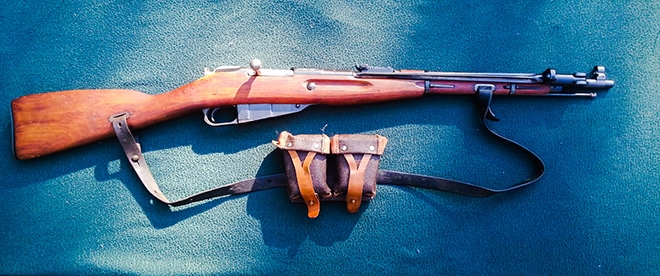
Unlike most 7.62x54R, these rounds are a lot less likely to be corrosive. Mosin Nagants are great, but a Ruger American is about the same cost, a lot lighter, and much easier to equip with an optic. Not a bad way to get a full-powered rifle on a tight budget.

The M1 Carbine – Rock and Roll
The M1 Carbine is such a cool rifle. It’s small, lightweight, easy handling and accurate. They still make modern reproductions, but they are nowhere near as great as a Milsurp M1 Carbine. A WW2 M1 Carbine is pretty old school with its wood stock and lack of Picatinny rails. What are we going to do?

We are going to put it back into the gun safe and purchase an Aero Precision EPC. The EPC doesn’t come in .30 Carbine but does come in 9mm and 40 S&W. Upi can use an AR pistol brace or stock, depending on your configuration. Those calibers are cheaper and much easier to find. The gun takes Glock magazines, and those are a lot less finicky than M1 Carbine mags.
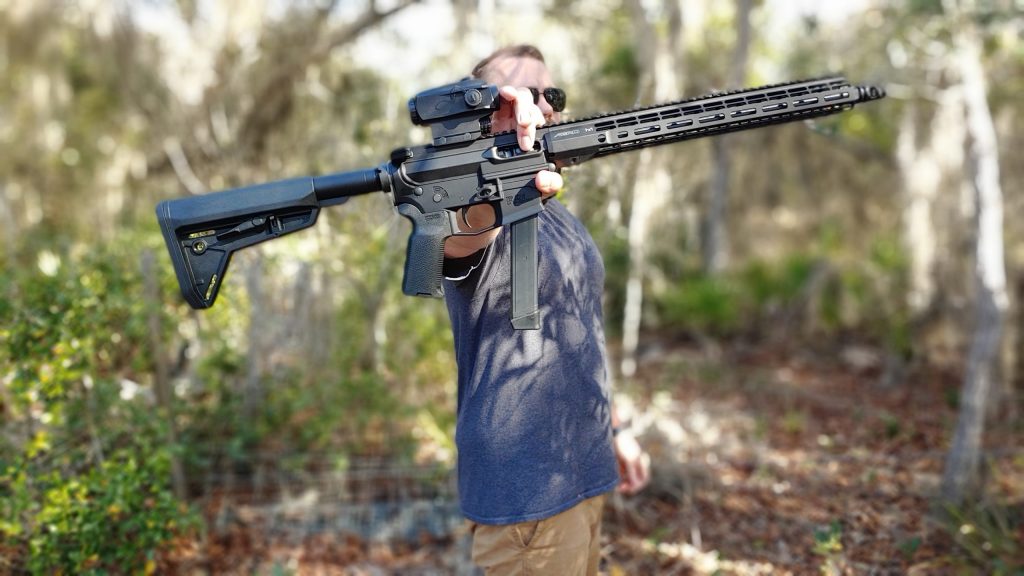
Swiss K11 Carbine 7.5×55
Holy crap, is the Swiss K11 awesome. It’s probably my favorite milsurp rifle. The K11 is a very finely made bolt action rifle with a twist. It’s a straight pull bolt action rifle. Meaning you pull the bolt back and shove it forwards, and that’s it. It’s much faster and more effective than a standard bolt gun. These rifles are absolutely beautiful and fantastically fun to shoot. How can we make it modern?
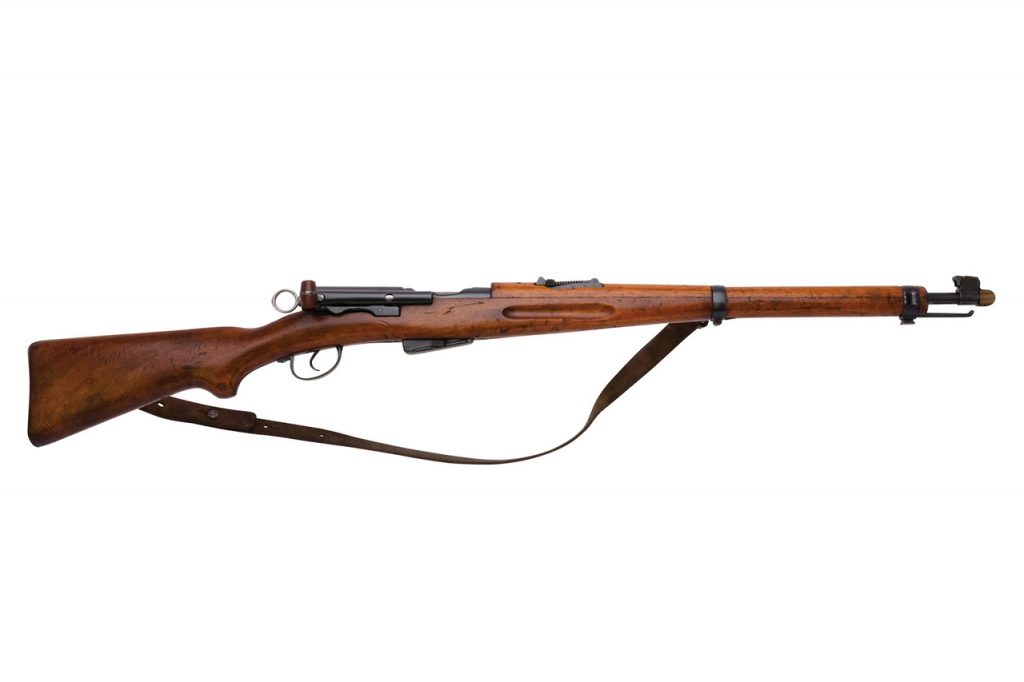
That’s easy! We buy a Savage Impulse and eliminate the impulse in your brain to add a scout scope to your K11. The Impulse offers you a straight pull bolt action rifle that comes in nearly every major caliber. These beefy, powerful rifles are very capable and a ton of fun to shoot. They offer you the same straight pull bolt design without having to find 7.5x55mm ammunition.
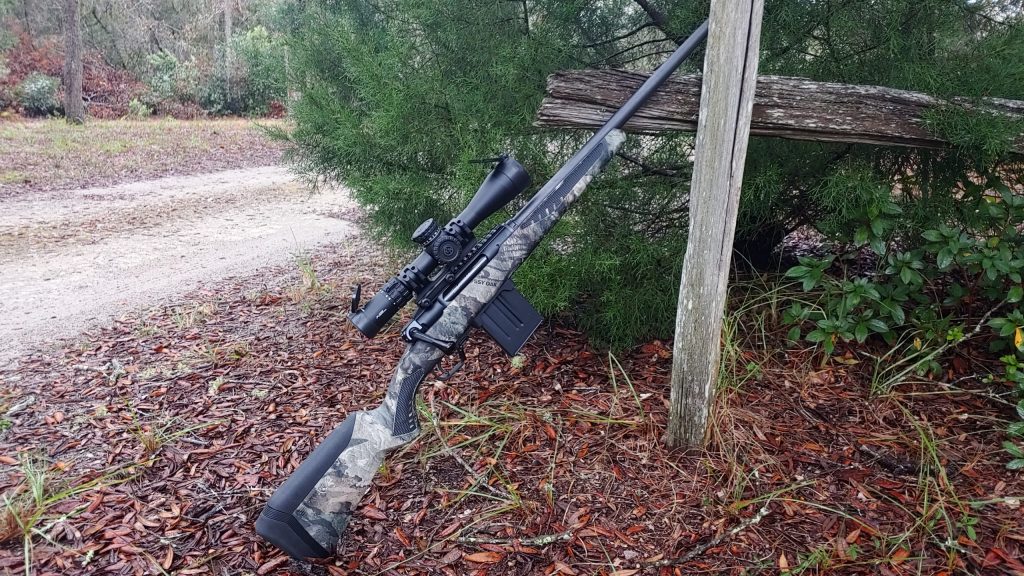
The SKS – The AK-Lite Alternative
The old SKS is a neat rifle, and while it was basically Russia’s M14, it was still a solid rifle. The days of 99-dollar Milsurp SKS rifles are long gone. You can still find SKS rifles from various countries, and they don’t break the bank. The wood stock and fixed magazine are lame, so let’s get a Dremel or visit Tapco! Or wait, how about we just buy an AK? All we are doing by modernizing an SKS is making it more like an AK.
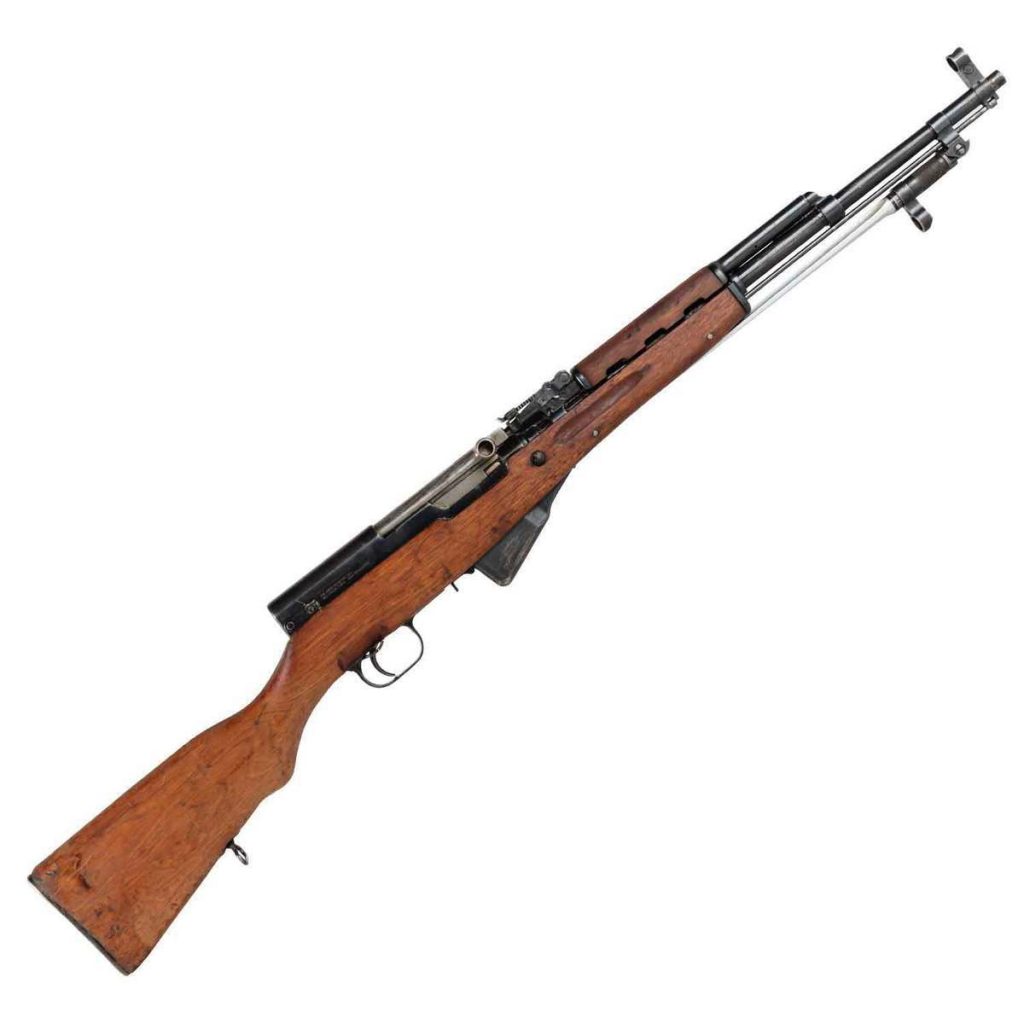
There are tons of AKs out there at varying quality levels and price ranges. There is one out there for you! Plus, the aftermarket is bigger and better with stuff from Magpul, US Palm, and more. Leave that old SKS alone and just get you the AK you want.
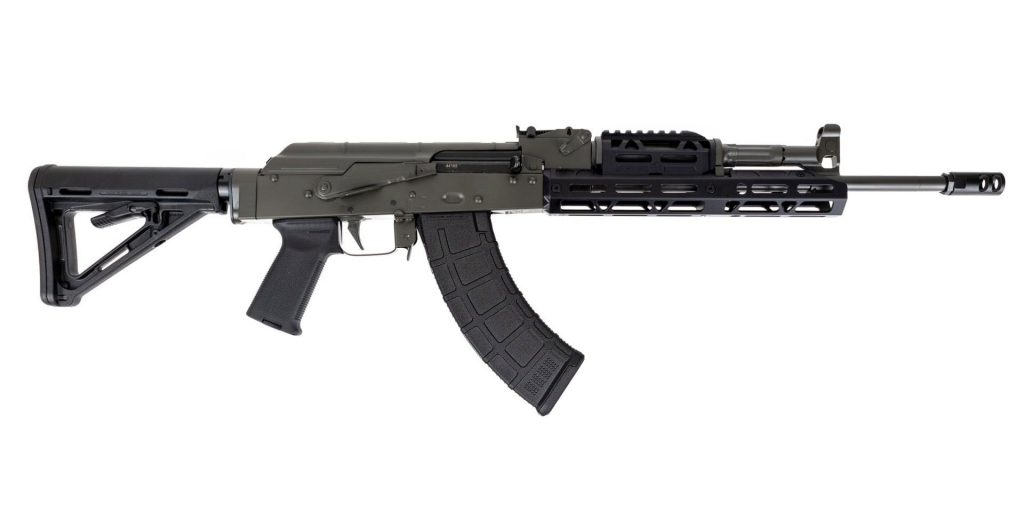
Makarov and Cheese
Oh yeah, the old milsurp Makarov pistol. The 9x19mm Makarov isn’t a powerhouse, but it is .380-like in capability. The Makarov is a lot like the AK and has been imported from tons of former Soviet Block countries. Makarovs aren’t exactly modern. No rails, no optic cuts, no compensators…boy, that would be… Awesome.

Honestly, I’d say just goof around with a Glock. The more I think about a tacaticalized Makarov, the better I think it will be. It seems goofy, but I’m here for it. Let’s toss a Holosun, a comp, and some kind of light on a Makarov and call it a day.
Keep Up With the Milsurp
There we have it. A list of the best milsurp guns and how to make them modern. Now we know how to take a crappy old, history-filled, milsurp rifle and turn it into something totally better. Something like that. You know what… don’t touch milsurp rifles with ill intent. Leave them the way they are and enjoy them.
Gun Fit – Hand Size, Grip Swells, and Knuckle Placement
Whenever a new potential gun owner asks what handgun they should get, they’ll often get a mixture of advice. Some will say just get XYZ brand, and others will say go rent some guns and see how they ‘feel.’ Feel is often touted as a very important part of owning a firearm, but what does that mean? The Polymer 80 grip feels better than the Glock grip. If it feels good, is it good to go? People justify their weapon selection by how it feels, but feel is a very open term. Admittedly hand size and gun fit are important, and today we are discussing what feel means and how to get the proper fit of your gun-to-hand ratio.
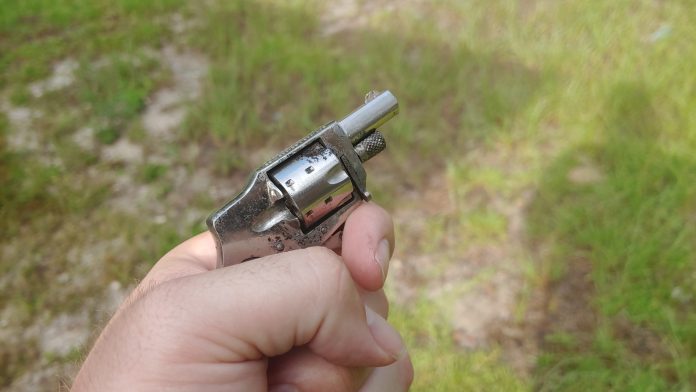
Sometimes a handgun doesn’t necessarily feel good but can be entirely effective. The Walther PPS M1 feels a bit like gripping a 2×4. However, the controls are completely accessible and easy to access. Sometimes a gun feels bad and is bad, like small hands and a Desert Eagle. It just won’t work. With that in mind, let’s teach you how to get a good gun fit.
Making a Gun Fit
When you grab the gun, there are a number of things you can examine to ensure the gun fits. First, knuckle placement will tell a tale. When you grip the gun, examine where your knuckles fall in relation to the trigger guard. If it’s directly under the trigger guard, you are getting along pretty well. This fit is desirable to maximize control.
If you find your knuckles orientating towards your non-dominant side, the grip might be too small. If your knuckles are orientated more towards your dominant side, the gun fit might be too big.

When it comes to compact handguns, especially concealed carry guns, the size will always likely orientate towards the thinner side. Sometimes you have to sacrifice control and proper gun fit for small size and concealment.
When you try different guns and grips, try to maximize a proper fit with the knuckles as close to being under the trigger guard as possible. It might never be 100% perfect, but it can be close enough. I would never choose a lower-quality handgun for a better fit, either.
Triggered
Another important part of gun fit is your ability to reach the trigger. Can you safely and effectively reach the trigger with the first pad of your trigger finger? If you have to shift your grip to reach the trigger, it’s likely too big. If you have to shift your finger outward to get the first pad on the trigger, the grip might be too small for you.

Typically guns with flat triggers offer a shorter reach, and curved triggers can slightly increase that reach. Companies like Glock often produce their big bore calibers in short-frame models to improve trigger reach.
Dropping Magazines
When you establish a good firing grip on your gun, how easily can you access the magazine release? If you have to make a big shift of your hand to reach the magazine release, you might need to make a change. You should be able to reach the magazine release fairly easily. It shouldn’t require you to shift your hand much more than lowering your dominant thumb.
If your thumb can reach the magazine release without issue, but you have trouble pressing it, the grip is likely a bit too small. If you have to shift your entire hand toward the magazine release, the gun fit is likely too small.
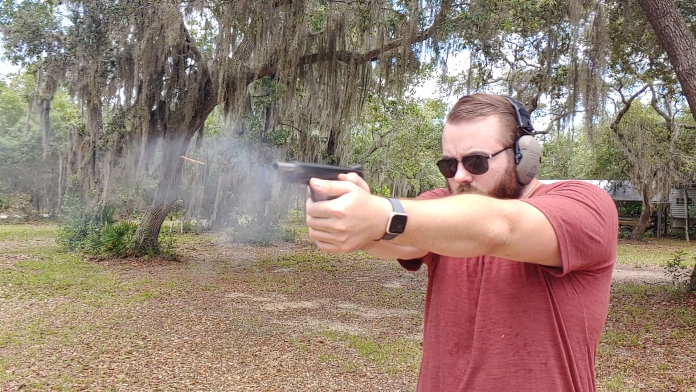
Solving Gun Fit Issues
We live in 2022, and most guns come with a variety of backstraps that allow you to customize your grip. It’s often worth experimenting with these various backstraps to get the optimum fit. Sometimes the proper fit doesn’t always feel good. To get the proper fit on my Arex Delta, I had to use the XL grip insert, and it doesn’t feel great, but it allows me to better control the gun and access the controls.
While I’ve written an entire article about how gun fit is important, it’s never an excuse to purchase a lower-tier firearm. Reliability, accuracy, and capability are often much more important than getting a 100% proper fit. You never want something way too big or way too small, but most guns fall fairly in between the two. Get the best gun fit you can without purchasing a craptastic gun.
Moms Demand Schizophrenia
The narrative of any shooting is a confusing jumble for the first few days, and anyone can get caught with their informational pants down, from Moms Demand Action, to the NRA. Any news source should be considered likely to get at least a few things wrong in the rush to get to print. Police often even make erroneous statements in the early aftermath. As we’ve seen numerous times a claim of “suspect in body armor” can rapidly turn out to be “suspect in Wish dot com airsoft vest”. High stress situations and a financial incentive to be the first to report can’t help but produce inaccuracies.
That said, we’re awarding Shannon Watts, of Moms Demand Action, a gold star for not only failing to take this sort of information deficit into account, but running with whatever narrative suits, even as the story changes dramatically. Initially, Ms. Watts announced that a crazed gunman, who naturally must have been spurred into criminal action by the ever-nefarious NRA, was facing murder charges, presumably rightly in her mind. Just over a half day later, when the story developed enough for her to learn that the shooter was a Person Of Color, naturally this depraved murderer morphs into a lawful shooter who was being railroaded by the racist Texas police.
While it’s inescapable that racism exists, and can impact police decisions, the skill and acumen Ms. Watts displays on the Moms Demand twitter account in changing both direction, and horses midstream makes one wonder if she has a secret background in rodeo. At least as a clown, certainly.
Gunday Brunch 80: Petite Asian with a Taser
Joining us this week is our favorite guest Annette to talk about performative masculinity and why sitting with your back to the door is probably fine.
You’ve Come A Long Way Baby: Ian From Forgotten Weapons Breaks Down Skorpion Evolution
The CZ Skorpion has been making its way onto the wish lists of gun nuts for 6 decades now, in one form or another. From .32ACP to 9mm, from Cold War Cool to PCC fame, this Czech subgun is immediately recognizable at every stage of its evolution, which Ian from Forgotten Weapons breaks down in detail in this video. The first gen model has been available as a very, very heavy semi-auto pistol for a while, and the modernized Skorpion is a popular PCC/Braced pistol for plinkers, prepper, and competitors alike. In this video, Ian takes a look at where it came from, and how it got here.
The intermediate form is especially interesting, as the OG model shines through what is an admittedly slapdash looking effort, but the final form can be found lurking amidst the buffet of attachments, if you look hard enough. Maybe squint a bit too.
It’s interesting to watch a machine pistol/PDW evolve into a full-size military submachinegun (or PCC), especially with the influence of the Laugo prototype, which seems to have imparted some Walther MP, or HK USP influence.
Hollywood Abominations – Guns That Make you Go WTF
Movies have an odd relationship with guns. It’s either they get it right, or they get it terribly wrong. One of the struggles movies have is making the guns in their films memorable. Hero guns is often the title used to describe standout firearms. Along the way, they occasionally make something a bit odd, and sometimes they create what I call Hollywood Abominations.
The Lee Enfield/Mossberg Maverick- Young Ones
Young Ones is this independent apocalyptic film involving water, water thieves, and a couple of famous child actors. The film is fairly entertaining but not exactly memorable. Something about robots and jealousy. What I do remember about the film is the very distinct combination of a Lee Enfield No.1 MK3 with a Mossberg Maverick Shotgun.

The Maverick is mounted like a Knight’s Masterkey under the Lee Enfield. Somewhat chopped the stock off the Lee Enfield and added a Vektor folding stock, and rounded the whole thing off with a seat belt as a sling. The end result is one of the standout Hollywood Abominations that looks awkward as hell. Holy length of pull Batman. This thing looks terrible to shoot.
(I still want it.)
The End of Days MP5
Is it really fair to blame the film End of Days for this configuration? It popped up first in the video game Half-Life. This is about Hollywood Abominations, not the video game abominations. Combining an M203 with an MP5 makes almost no sense. You’d choose an SMG when you want something lightweight and easy to handle.

Adding an M203 40mm grenade launcher is a great way to increase weight and reduce maneuverability and handiness. Plus, the M203 has a longer effective range than the MP5! It’s a bit absurd, but here we are. To mount the M203, the armorer had to use a larger muzzle device to act as a secondary index point for the damn thing.
That being said, I guess if you are fighting the literal devil, maybe you want as much firepower as you can carry.
Snake Plissken’s MAC-10
God, I love Escape From New York. It’s such a fun flick that perfectly encapsulates pulp fiction. Our gravel-voiced hero Snake Plisken, former Green Beret and current criminal, is sent into the penal colony of New York City to rescue the President. His issued firearm is a MAC-10 machine pistol.

An odd choice, but okay. It features the famed SIONICS suppressor, which is downright necessary for controlling the MAC. Still in the normal territory. Where we enter Hollywood Abomination territory is in the optic. It appears to be a 2-7X scope mounted to the suppressor. Trying to index this thing just right to use the optic would be a pain. Oh and they removed the stock too.
Not to mention that the heat from the can would likely play with the zero. The gun also has a holster and sling. We actually see Snake use the sling when he has to climb away from the baddies. We also see him cut a hole in the floor with the MAC, so take it for what you will.
All The Hollywood Abominations
This is only one article on Hollywood Abominations. It’s likely one of many I could write, and I might just make another. Hollywood tries its hardest to make interesting weapons that stand out, and sometimes it gets a little weird. Maybe they should consult some real gun pros to get something both unique and effective, but what do I know?
“Magazine capacity restrictions and permitting requirements have a proven track record: they save lives!”
Attorney General Ellen Rosenblum of Oregon said in a statement the above and added. “We are confident the Oregon Constitution — like the Second Amendment of the U.S. constitution — allows these reasonable regulations.”
I don’t know if I would be confident in that Madam AG, that whole “shall not be infringed” section doesn’t just magically become void if you state that what you’re doing isn’t infringement. That’s not how it works. Sure you got your liberal urban voters, who couldn’t pass an elementary school level test on the subject, to approve your measure without a critical thought passing through their heads. But that’s the wonderful thing about constitutional republics you see, the tyranny (or idiocy in many cases) of the majority can be challenged and beaten.
Capacity restrictions and permitting requirements have no such track record. The strongest evidence in our possession suggests that safe storage laws have some influence on injury rates among minors and that pretty much ends what we know has a positive influence from gun control.
Illinois has one of the most stringent permitting schemes in the nation, the FOID, and Chicago is still crying out about how it isn’t nearly good enough and how ‘People with terrifying firearms of immense power are hunting the residents of Illinois!‘
Where is this data that says 10 rounds is safe and that we are curbing violence with it? Where is this data that says a permission slip to exercise a constitutional right is saving oh so many lives? Where is peer review on the data showing it, the prohibitions and pieces of paper, are protecting people from homicide?
Luckily for the rational folks who understand what infringement means, the Oregon courts have put a pause on it.
The Oregon measure bans the sale, transfer or import of magazines over 10 rounds unless they are owned by law enforcement or a military member (who never do anything wrong, unless its ACAB time) or were owned before the measure’s passage. Those who already possess high-capacity magazines can have them only in their homes or use them at firing ranges, in shooting competitions, or for hunting, as allowed by state law after the measure takes effect (which makes this whole thing rather moot as magazines are durable goods and the next tragedy will be leveraged to remove grandfathering).
It would also close a federal loophole that allows gun transfers to proceed if background checks cannot be completed quickly.
That loophole is in place to make certain the Fed can’t just forget a background check and leave it in limbo, which happens every day. There were dozens of checks that didn’t get a resolution when I was behind a gun counter, there were plenty of times NICS wasn’t working at all as their computers were in the midst of yet another operating crisis. We should totally suspend people’s right to a firearm for use in their defense over technical difficulties though, right? It’s only safe.
NICS and state systems have never passed a mass killer after all. Hint: It was 77% of the time according to a 1966-2019 NIJ review. Mass killers got their gun legally and passed all checks 77% of the time, acquiring their weapon another way in only 23% of instances. Making for 100% damned if you do damned if you don’t, it’s almost like a motivated killer can’t be stopped if they are otherwise free to act as they wish regardless of the circumstances of that freedom.
But I’m sure limiting magazines to 10 rounds, except all the ones that aren’t, and removing the Brady transfer mechanism that was put into place specifically to not violate anyone’s rights through an arbitrary system failure will solve things. The permit-to-purchase requirement is another one that is especially interesting, because I don’t think they actually came up with a state method for that. They made it a requirement without having a process in place, fantastic execution of authority team. Way to keep the confidence levels high.
The Supreme Court decision on the New York law signaled a shift in how the nation’s high court will evaluate Second Amendment infringement claims as they now require a much stricter scrutiny, that judges can no longer declare a law ‘serves public interests like enhancing public safety’ without strong evidence and instead must weigh whether the law is “consistent with the Second Amendment’s text and historical understanding.”
That was a huge win in Bruen, and the follow-up reckoning from the bench that lower courts should reexamine recent 2A cases under that guidance before the Supreme Court starts handing out more defeats was telling. ‘Public Interest’ has always been a catch all defense that have allowed courts to drop cases and side with the government for nebulous and ill-defined reasons.
Because of course if it was for ‘the greater good’
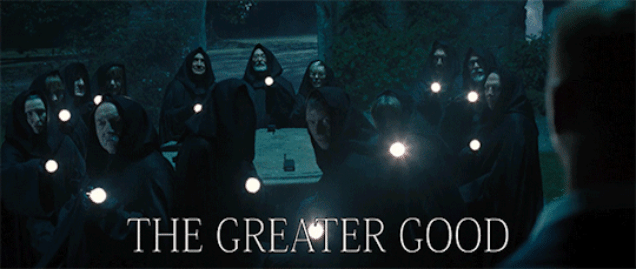
we should shelve things like logic and evidence, or lack there of, and do the thing you consider to be in the publics interest. Funny that if something you don’t think is in the publics best interest comes along you suddenly don’t think folks should just be able to declare it so, but I’m sure that is not hypocrisy talking or anything.
Anyway, Oregon government is the biggest of mad that their new rule is probably going to get the SCOTUS ban hammer if they don’t get it sorted before hand and that is just wonderful.
A Matter of Perspective Part 2
“Your micro isn’t everybody’s macro”
This is a favorite expression of friend and mentor Cecil Burch of Immediate Action Combatives.
Without putting words in his mouth, my understanding is that this comment is born out of people’s tendency to view things through the lens of their own experience and use that to determine viability and validity, whether that be a technique, piece of equipment, or lifestyle choice.
This is going to be a short series on my observations of that saying’s applicability in various segments of the gun world.
I will preface this by saying that these articles are not intended as any sort of hit piece or critique of any specific individual, merely my observations having spent time in various segments of the defensive space, as well as seeing how some ideas are received by folks outside of the self defense community.
My hope is to help bridge some perceived communications gaps that result in people talking past one another, to facilitate the transfer of the best possible information in the easiest possible manner.
GUN SHOP MICRO ISN’T EVERYBODY’S MACRO:
I spent my first 2 years after college working at one of the largest family owned gun shops in the city (possibly in the country). My time there exposed me to a lot of information and expertise, as well as a fair share of myth, lore, and outdated info.
Just like the environment mentioned in Part 1, when working in firearms retail, everyone you work with regularly is either already deeply entrenched in the armed lifestyle, or at the very least it’s not a foreign concept to them.
That may not be the perspective shared by someone that’s walking up to your counter for the first time. They may be uncomfortable with the idea of guns for self defense. They may not be aligned with you politically, religiously, or philosophically.
Gun store employees can be someone’s first (and sometimes only) in-person interaction with “gun people”.
What’s imperative that we all keep in mind is, in the context of defensive firearms, people will literally be betting their lives on the advice we provide. It’s incumbent that we do our best to set people up for success, not try and shoehorn our favorite solution into a context where it may not be appropriate.
It’s generally agreed that the optimal defensive handgun is a double-stack 9mm on the larger side of compact (Glock 19 sized). They’re big enough to be reasonably controllable, but at least moderately concealable for most folks (at least the ones in the middle of the bell curve).
But people aren’t a homogenous group, and individuals will require tailored solutions. Hand sizes vary. People have various degrees of dexterity and grip strength. Different lifestyles & careers come with different wardrobe requirements and varying levels of permissive environment. So if the only solution a sales associate has is the optimal full size double stack, they either end up selling someone an ineffective solution for the problem at hand, or possibly discouraging the person from carrying altogether because they’re made to feel like there’s something wrong with them because they’re unable or unwilling to accommodate the optimal solution.
My own mother was made to doubt her choice in a Shield EZ because the guy had a bias against manual safeties.
This also applies to sub-caliber handguns. While 9mm is the current king of the hill, 380, 32, and even 22 still have a place in defensive applications. Primary & Secondary did a great Modcast on the topic.
Working the gun counter is a delicate balance, because obviously you need to make sales in order to keep the lights on, but bad advice can get people hurt or killed.
While the gunshop myths about giving women 38 snubs and novice home defenders pump action shotguns are slowly dying, the latest crop of bad info coming out of gun shops is generally insisting that the full size fighting handgun is appropriate for everyone that walks through the door, and that civilian defenders need to be ready for the next North Hollywood shootout.
Now don’t get me wrong, if someone’s lifestyle is such that they can practically manage a double stack handgun, spare mag, and all the supporting accoutrement, more power to them. Not everyone is fortunate enough for that to be their reality, and we need to have solutions for them, not “just try harder/make it work”.
Grip Sleeves – Crocs For Your Gun
Whenever I see someone post a picture of their EDC and it wears one of those silly grip sleeves, I get a little bit of a chuckle. I’ve always thought they were just Crocs for your gun. I see them often enough that I think it’s wise to write a bit of a cautionary tale for those considering grip sleeves. If you are unsure what I’m talking about, believe me when I say ignorance is bliss.
Grip sleeves are those thin rubber sleeves that are designed to fit over the grip of your gun. It slides up and on your gun. Quite a few companies, both large and small, make these grip sleeves, and they seem popular enough. While popular, you should know the downsides and cautions of these little gadgets.
Why Grip Sleeves
Personally, I don’t know. I’ve tried them and originally thought they were neat. However, after learning to shoot and shooting more, I’ve become convinced they are fairly useless. However, that doesn’t mean I’m right, as I am often wrong. While I don’t personally understand the desire for grip sleeves, I have heard of reasons from others.
Many say it improves the fit of their gun to their hand. The grip is too small, and they need to make it bigger for their hands. To that, I just say buy a gun with a bigger grip…you probably get a higher capacity in doing so.
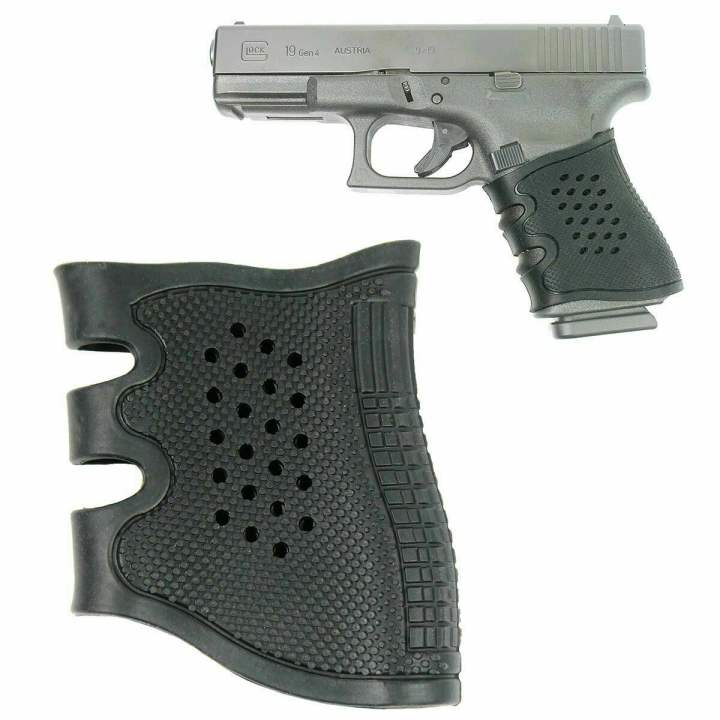
They’ve also been noted to improve grip and to be sticky. This one I can buy, but with a lot of modern guns, the grip texture is already quite aggressive, and if not, stippling is a better option. On the flip side, I’ve also heard people say they help cover grip texture they find too rough.
I’ve also heard recoil reduction, especially for J-frame revolver shooters. Again, if you are shooting a revolver, you can likely swap the entire grip for something better accommodating. I’m not entirely sure of the difference they make with recoil, and I haven’t experienced that in my limited shooting with grip sleeves.
If I had to guess, it’s because people like to tinker. Tinkering with guns is fun and sliding on grip sleeves is an easy way to make a simple upgrade. I don’t hate tinkering. I do it too.
Problems with Grip Sleeves
Why do I dislike grip sleeves so much? Did they touch me as a child or something? Well, not quite. While I have no doubts that some grip sleeves are better than others, in my experience, they have more problems than benefits.
First, once you shoot with one a fair bit, you’ll likely notice it sliding up or down on your gun. It won’t be a major movement but a slow and steady climb or decline. It becomes more noticeable during high round count practice sessions or classes. When grip sleeves slide up or down a semi-auto pistol, you’re bound to run into issues.
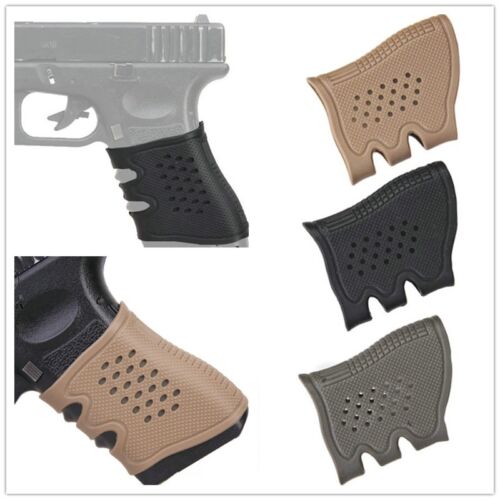
It might begin to cover or press on your magazine release, making it stiff or inaccessible. If it slides down too far, it might pin your empty magazine in the gun or make it difficult to seat another magazine.
When carried concealed, the stickiness of the rubber can catch on your cover garment when moving and create an exposure or printing situation. Concealed is called concealed for a reason.
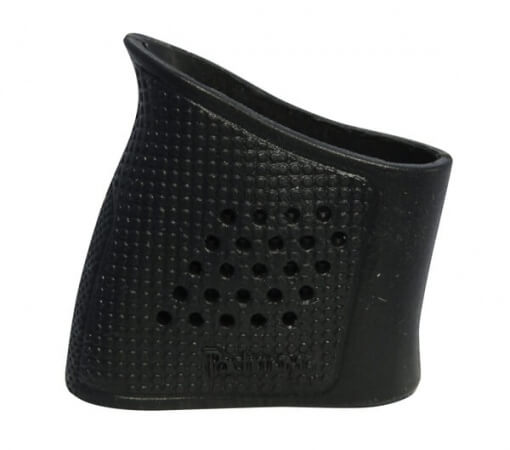
Finally, you have to see these things as disposable. Eventually, they will get a small tear and need to be immediately replaced. A slight tear will evolve into a bigger tear and could interfere with using your handgun.
Grip Sleeve Alternatives
If you are still seeking to tinker with your grip, check out Talon Grips. These are specifically designed for individual firearms and fit the grip. They often add a grippy texture and improve your traction on the gun. They are an affordable upgrade you can do at home too.
Grip sleeves aren’t for me, and maybe you’ve used one for 1 million rounds with no issues, but I think everyone should know what they are getting into with grip sleeves. No one has ever said, “Hey, nice Crocs,” for a reason.

